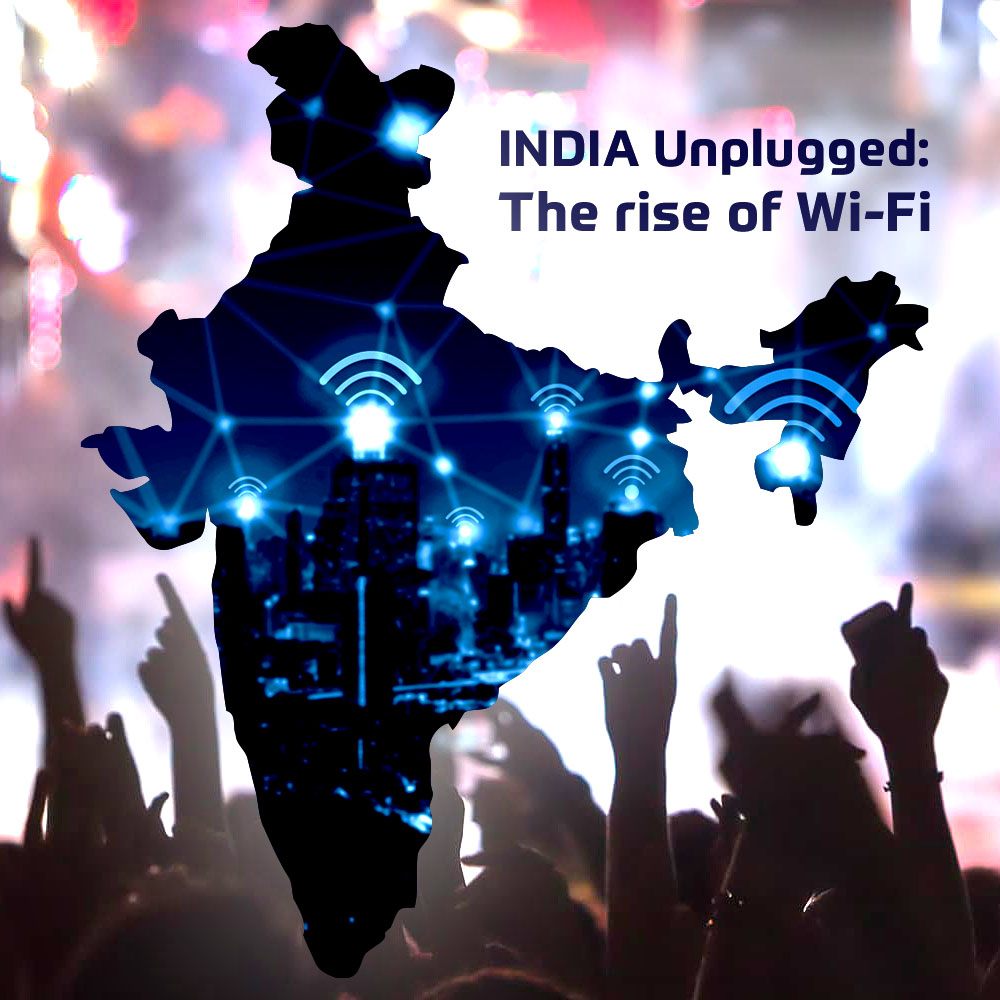It won’t be incorrect if we say that Internet has become one of our basic needs of daily life like food, water, and shelter. Increasing number of smart phones and wearable devices are one of the driving factors in the growth of Wi-Fi market; particularly, in fast developing countries such as India.
As per the recent market report, the number of IoT devices in India is expected to grow from 1.9 billion to 9 billion by FY2020. One can imagine the amount of bandwidth and internet speed needed to cater to the huge number of IoT and Smart devices and the data thus consumed. Wi-Fi has become the most preferred internet network over the other networks because of the freedom and agility it has offered. Currently there are around 31000 hotspots in India and by 2018 it is estimated to cross 202,000 hotspots.
It is pertinent to mention that the constant growth of internet penetration in India and number of hotspots across the nation is key driver of growth the Wi-Fi population in India. India ranked 108th position in broadband affordability and 97th position in mobile broadband services across the world in 2016. In India currently around 108 airports, 13967 cafes, 4435 retail outlets, 12856 hotels and 150 municipalities are Wi-Fi enabled. Moreover, increase in smart phones, gadgets and devices including Television, Camera, etc. as well as WLAN solutions have resulted in multi-fold increase in the home hotspots. People prefer to deploy hotspot network at home than using broadband in current market. However, there is a vast scope of proliferation of Wi-Fi networks in India.
The Carrier Wi-Fi segment is evolving at an accelerated pace and there are several key drivers which has increased the demand in the market. In the last few years, the surge in smart phone devices and bandwidth devouring applications are lifeless without constant internet supply. Whether it is mobile data or wireless internet, these smart devices are active only when it is in the internet zone. Adding fuel to the market demand, the cloud based applications and IoT devices have also quadrupled in numbers bundling sensor based communication using Wi-Fi platform. Moreover, the cost-effectiveness and benefit of agility provided by Wi-Fi has led to deployment of hotspots at various public venues and private venues like University campus, hospitals, hotels, etc. has helped in increasing the internet penetration. Variety of innovative Wi-Fi solutions introduced in the market has like Wi-Fi roaming, Wi-Fi calling, Wi-Fi analytics, Wi-Fi monetization, etc. has also led in leveraging the full potential of Wi-Fi platform and offering the best quality of services to customers. Moreover the support and dedicated efforts of Indian government in launching a wide number of campaigns including Digital India, Smart City and Bharat Net has also increased the awareness of Wi-Fi and digitization benefits.
We will be tracking the Wi-Fi trends and solutions available in the second part. Stay tuned.















